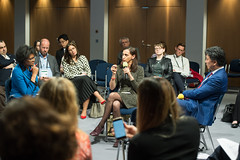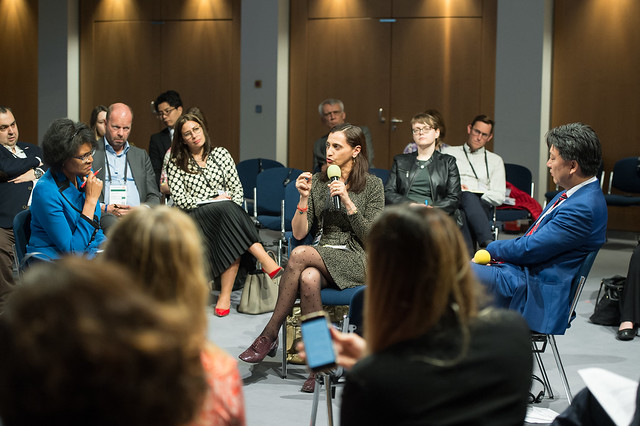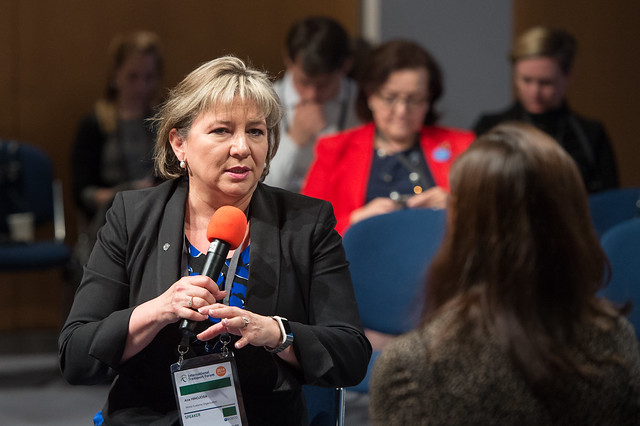Gender differences in transport stem from a constellation of economic and social disparities including access to resources, household responsibilities, and cultural norms surrounding women’s mobility. As a result, women face unique time and resource constraints, as well as safety considerations with respect to their travel activity and their participation in the transport workforce. These differences are systemic and self-reinforcing, as mobility provides access to sources of income, education, healthcare, and other opportunities. The session on Women’s Travel and Participation in Regional Transport Systems addressed strategic approaches to equitably designing transport systems as well as gender issues from a user and a workforce perspective.
Strategic approaches to equitably designing transport systems
Transport systems that facilitate equal access, safety and convenience raise the standard of service for all users and bring significant regional economic and social benefits. Gender-disaggregated data will be critical in developing inclusive solutions, and more resources will need to be invested in pursuing a better understanding gender differences in transport. The Swedish government, for example, has prioritised a holistic approach to inclusive transport policies by collecting gender-specific statistics and requiring new project proposals to include gender analyses.
Gender issues from the user perspective
The unique constraints that women face and their often more complex activity base lead them to use private and public transport differently than men. Specifically, women tend to make shorter, more frequent trips, often carrying items or accompanied by children. This can mean that women face higher mobility costs than men. In developing countries, improved mobility for women will first focus on increasing ridership on public transit and non-motorised transport modes. Transport-oriented development will also be an important tool in improving mobility in an equitable way. In more developed countries, new forms of mobility offer improved connectivity for women. For example, evidence from six countries (the United Kingdom, Mexico, South Africa, India, Egypt and Indonesia), indicates that safety and flexibility are among the primary reasons why women choose to use ride-hailing services.
Gender issues from the workforce perspective
Women are significantly under-represented in the workforce in the transport sector, especially at higher levels, such as on boards of directors and in leadership positions. Many barriers to the greater recruitment, retention, and advancement of women in transport professions arise from the fact that the sector has traditionally been male-dominated. This leads to a lack of examples of female professionals at all levels of responsibility, and a lack of awareness of the range of occupations that are available in the sector. Finally, embedded norms predispose girls and women to pass over transport as a sector that contains interesting and appropriate employment opportunities. Barriers can be overcome by a number of means. Within transport companies and organisations, mentorship programs can increase the visibility of women in transport professions and the transmission of information about the range of employment opportunities available in the sector. Technological advances such as automation and mobility-as-a-service can create new job opportunities for women in the transport sector.
“You need a holistic approach… If you don’t have that, you can make progress on some steps, but you will not see the full benefits.”
- Matthias Landgren, State Secretary to the Minister for Infrastructure, Sweden
"This is not about only women’s rights, but also about development.”
- Karla Gonzalez Carvajal, Manager for Europe and Lead Manager for the Gender Agenda in the Transport sector, The World Bank
“Safety came up as one of the key concerns that women have, everywhere around the world.”
- Rana Kortam, Manager of Global Women's Safety Policy, Uber
“We need to get more women involved in designing these [transport] systems and we need to collect data that is disaggregated by users.”
- Heather Thompson, CEO, Institute for Transport Development and Policy
“Careers in these fields [transport] are still pitched far less often to girls and women than to boys and men.”
- Bipasha Baruah, Professor & Canada Research Chair in Global Women’s Issues, University of Western Ontario
“The workforce is transforming, and that is benefitting men and women.”
- Diego Diaz, President, SNCF International
Speakers
Speakers

Bipasha Baruah
Professor & Canada Research Chair in Global Women’s Issues
The University of Western Ontario

Karla Gonzalez Carvajal
Manager for Europe and Lead Manager for the Gender Agenda in the Transport Sector
The World Bank
















